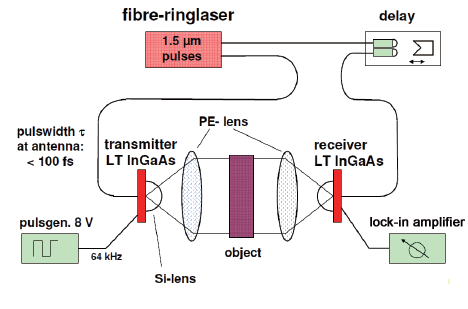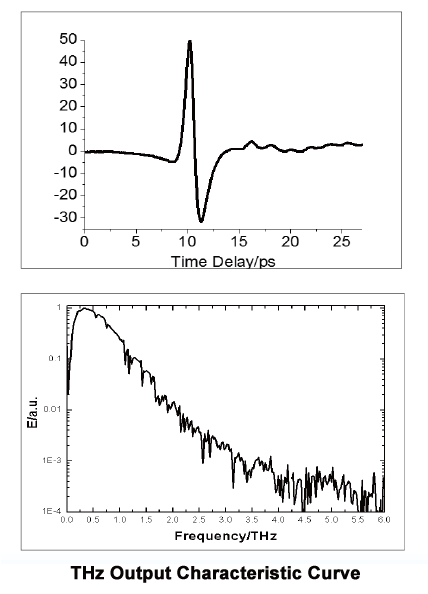Terahertz time-domain spectroscopy characterizes material properties by measuring complex responses in the frequency range from terahertz to tens of terahertz. In this frequency band, various resonance phenomena such as electron and phonon excitations in solid materials are usually observed.
In order to obtain the complex frequency response of the material, the nonlinear process of the ultrashort pulsed pump laser is usually used to generate a terahertz pulse in a specific frequency range. THz pulses are transmitted and reflected in the sample. Then, the terahertz wave is collected by electro-optical sampling or photoconductive antenna based on nonlinear technology using ultrashort detection pulses, so that the instantaneous electric field of the terahertz wave can be recorded. The time delay between the probe light and the terahertz pulse allows the acquired data to be used to reconstruct the magnitude and phase of the electromagnetic field in the full terahertz waveform.
Similar to other ultrafast optical techniques such as pump-probe spectroscopy, the temporal resolution depends on the width of the probe light pulse rather than the bandwidth of the photodetector or measurement circuitry. This means that terahertz time-domain spectroscopy can observe waveform changes within a terahertz pulse cycle.
Fig.1 THz time-domain spectroscopy measurement structure diagram
The pulse train from the femtosecond laser is split into two beams. One beam with larger energy is the pump pulse; the other beam is used as the probe light (probe pulse), and then acts on the THz detector through the time-delay system. The pump pulse is incident on the THz transmitter to generate a THz pulse, which then passes through the sample, merges with the probe pulse passed through the time-delay system, and passes through the THz detector. Finally, a lock-in amplifier is used to detect its weak electric field change. The time delay between the pump pulse and the probe pulse is adjusted by controlling the time delay system, and the time domain waveform of the THz pulse can be obtained by scanning this time delay. After the waveform is Fourier transformed, the spectrum of the tested sample can be obtained, and the optical parameters such as transmittance, refractive index, absorption coefficient, dielectric constant, etc. of the sample can be obtained by comparing the change of the spectrum before and after placing the sample.





